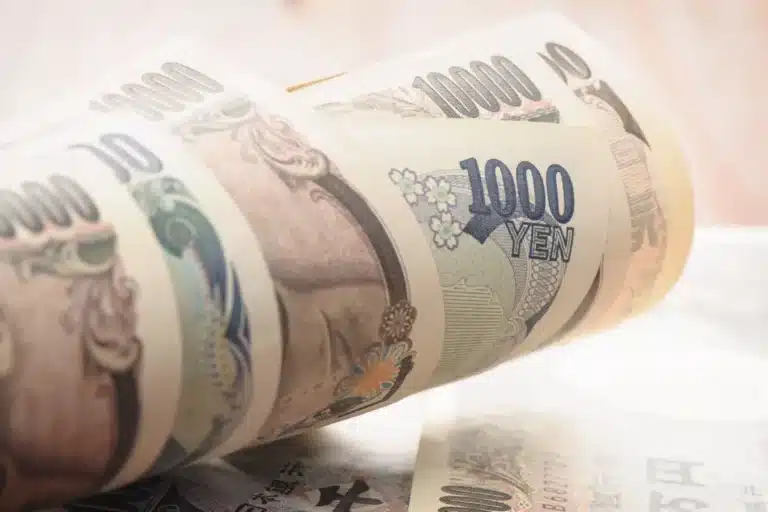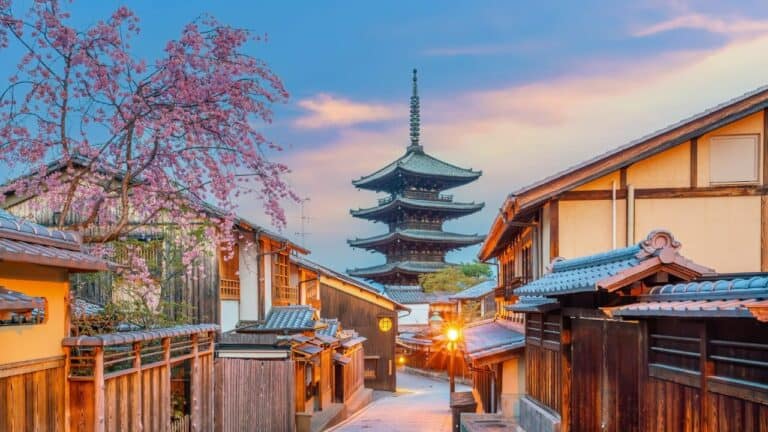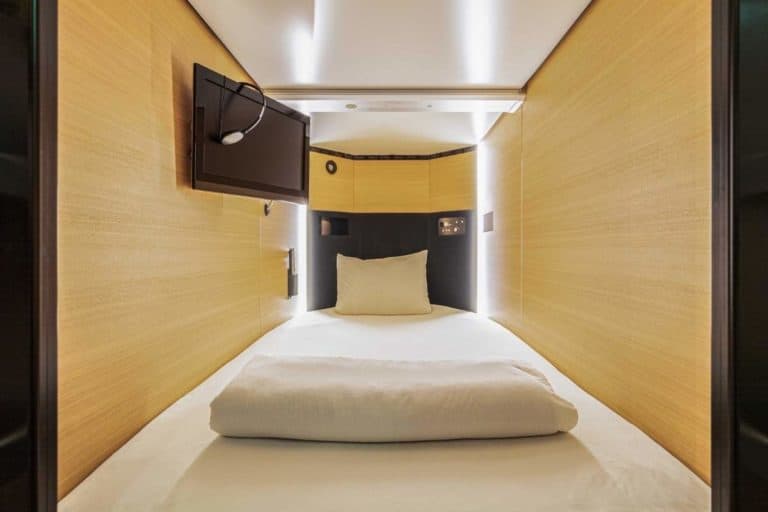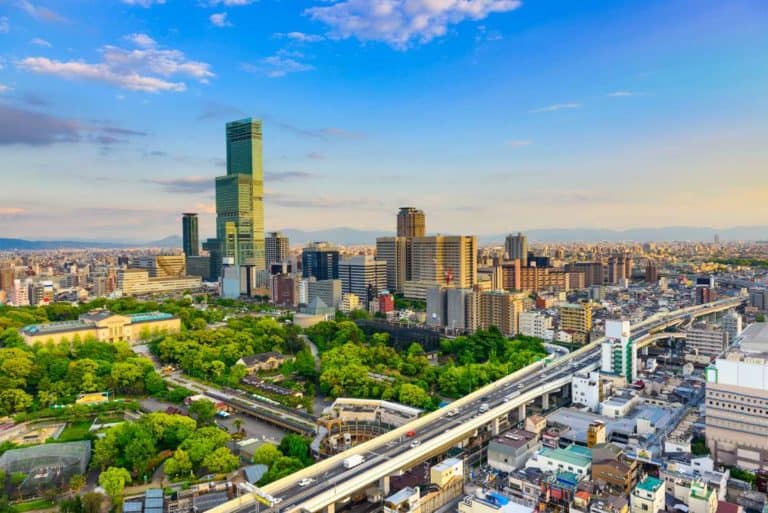20 Things to do in Kyoto: Not only Temples or Shrines
Kyoto is a city rich in history and culture, and there’s so much to see and do here that it can be challenging to know where to start.
If you’re looking for something different to do in Kyoto, why not try out some of these places?
1) Take a stroll through the Arashiyama bamboo forest.

One such place not often talked about is the Arashiyama bamboo forest.
This forest can be found outside the old town of Kyoto, one of the most famous places in Japan, to get a glimpse of Japanese culture.
The Arashiyama bamboo forest is home to an endless number of tall green stalks with leaves on top swaying in the wind all around you as you walk through it, making for a beautiful sight that will make your visit worth it alone!
This location offers much more than just beautiful scenery; there are plenty of shops and restaurants nearby where you can relax with a bite to eat after you finish walking through the forest.
2) Experience traditional Japanese culture at Fushimi Inari Shrine.
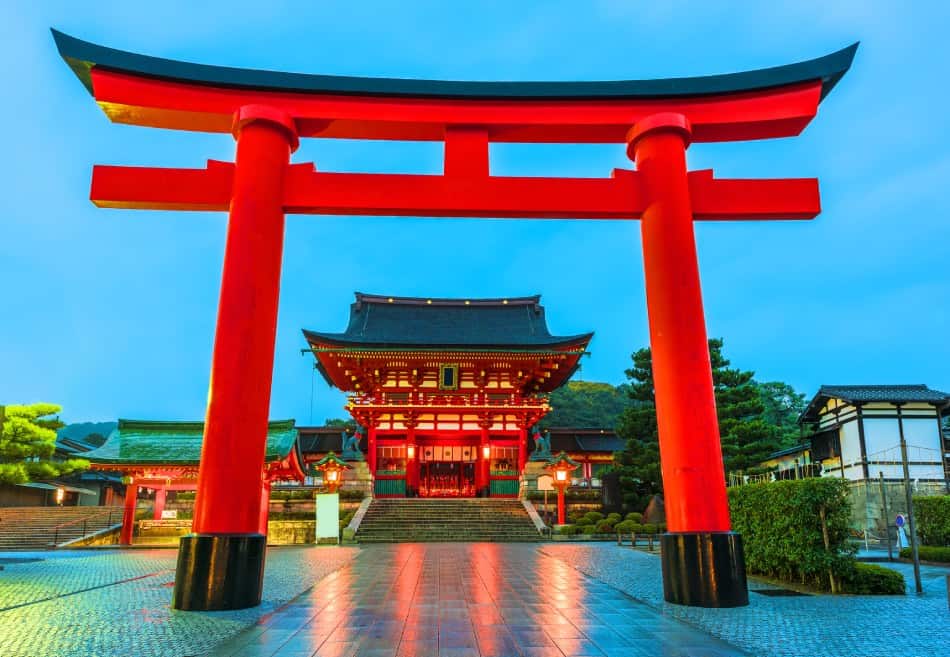
Another great place that is popular for its beauty and cultural significance is Fushimi Inari Shrine.
Fushimi Inari Taisha is one of Japan’s oldest and most famous shrines.
Located in southern Kyoto near the base of Mt. Inari, it is known for its thousands of vermilion torii gates, which are believed to enter both the physical and spiritual worlds.
Thousands of torii gates, one after another, make up the path leading up to the shrine, giving this place an almost magical feel.
The best thing about Fushimi Inari Shrine is walking through its pathway of torii gates. You can do this for hours if you want, and it’s sure to make your Kyoto trip much more enjoyable!
3) Enjoy some shojin ryori (vegetarian Buddhist cuisine) in Gion.
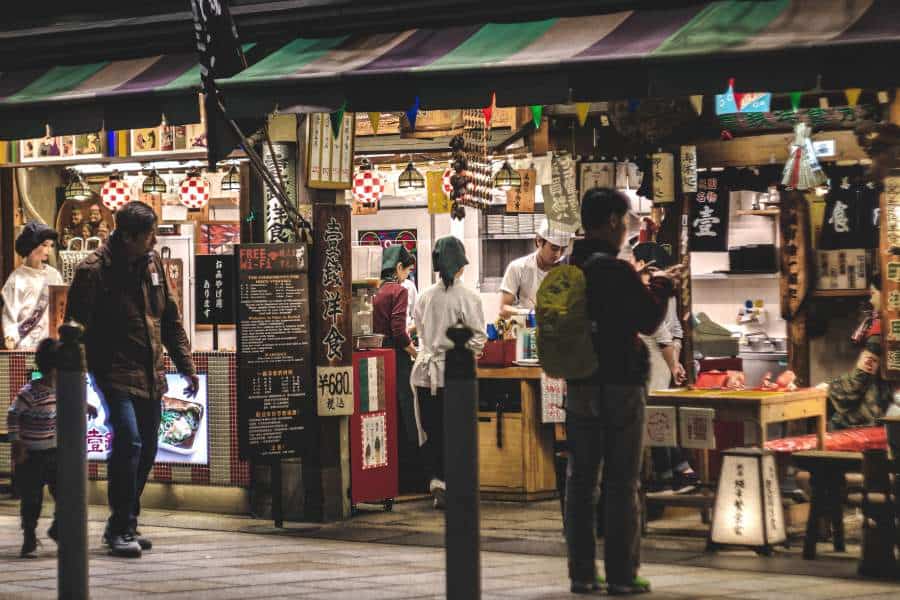
Want to try something unique when in Japan? Then maybe you should consider eating shojin ryori, traditional Buddhist cuisine without meat or fish.
Kyoto is home to some great shojin ryori restaurants, and Gion is one of the best places to find them.
Some stunning examples you can find here include shojin dengaku (grilled eggplant that’s been glazed with the restaurant’s tare sauce), konnyaku (a jelly-like substance made from devil’s tongue root), and gobo ko (deep-fried burdock root).
The ingredients used in shojin ryori tend to be seasonal, so what you’ll find on the menu will vary from restaurant to restaurant, so it’s a good idea to try out a few while you’re in Kyoto.
4) buy some souvenirs at Nishiki Market
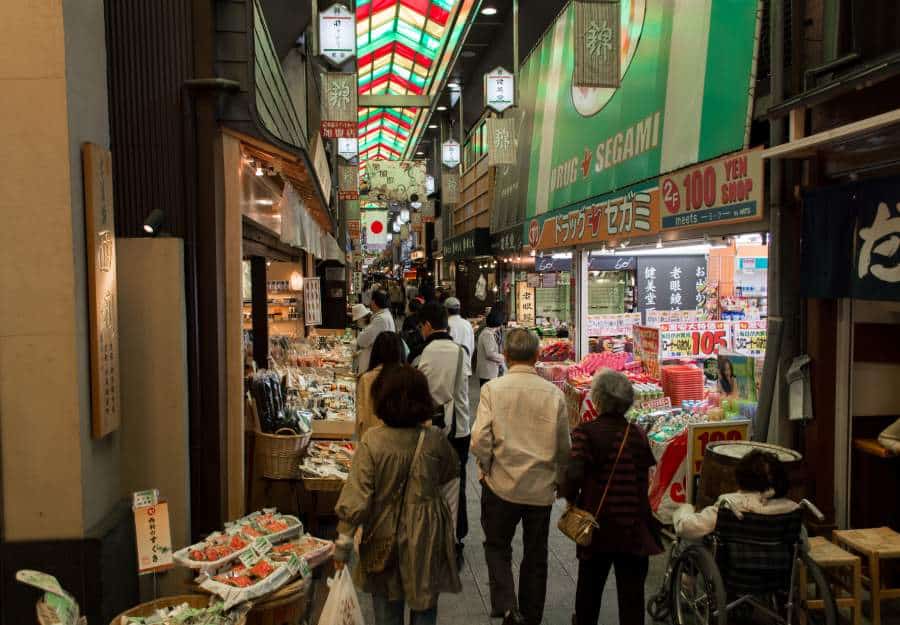
Nishiki Market is a great place to buy souvenirs. It’s also suitable for buying high-quality food and spices.
If you’re looking for somewhere to get souvenirs before leaving Kyoto, Nishiki Market is the perfect destination!
Many shops sell handmade fans, kimonos, pottery, dolls, and more.
You can find many different things here than in most other tourist areas, so it’s worth checking out even if your trip doesn’t include Kyoto.
And if you’re unsure what to buy as a gift or want something special, there are plenty of options here too!
For example, pick up traditional tea sets or beautiful silk fabrics that would make excellent home gifts.
Tourists in Kyoto often overlook Nishiki Market, so it’s perfect if you want something more unique than the usual souvenirs.
5) Visit the Kitano Tenman-gu Shrine.

It is said that when you visit the Kitano Tenman-gu Shrine, you will be relieved of your creative block.
This shrine was built to keep evil spirits away and bring good fortune.
To this day, it’s still considered a sacred site where people go for help with their creativity.
Many visitors believe the shrine helps them think outside the box and make connections they would not have otherwise made.
6) Get lost in Gion.

The Gion district is also known as the Geisha district.
Since the Middle Ages, the community has been a city’s cultural center, once home to over 1,200 teahouses and restaurants.
It’s a popular tourist destination due to its historic buildings and traditional Japanese culture. It’s also straightforward to get lost in this district.
You can quickly become disoriented by the winding streets because no signs point you in any particular direction. It may feel like you’re going around in circles!
This sense of being lost is frustrating and scary; you don’t know where you’ll end up or if you’ll ever find your way back to your hotel!
7) Take a day trip to Nara.
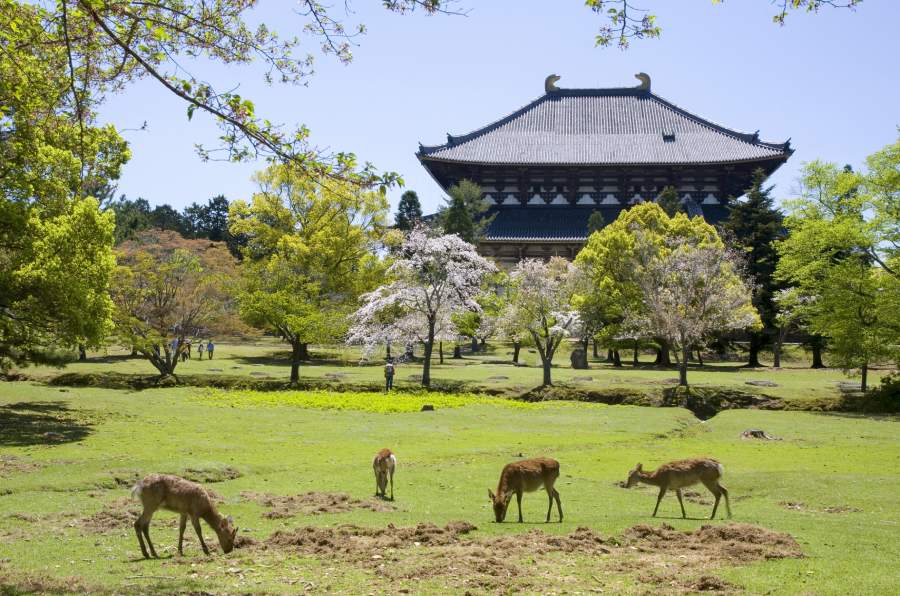
Nara is located in the Kansai region of Japan. It’s an ancient city with temples and shrines; many were built over 1000 years ago.
Nara was once the capital of Japan during the 8th century, but it eventually lost its power to Kyoto.
Nara remains one of Japan’s most important cities due to its connections with Buddhism and Shintoism and being home to some 3000 deer who roam freely through the streets!
Come visit Nara on your next trip to Tokyo or Osaka; you won’t regret it!
8) Ride a bicycle through the scenic streets of Kyoto

Riding a bicycle through the picturesque streets of Kyoto and taking in the sights and sounds of this historic city is an unforgettable experience.
The best way to see everything Kyoto offers is on two wheels, not four. From cycling with monks during their morning prayers to exploring ancient temples, you’ll get up close to some of Kyoto’s most beautiful sites.
A visit to Japan is impossible without seeing these famous sites by bike!
9) Visit a traditional Japanese tea house

If you are looking for a way to relax and recharge, look no further than the Japanese tea house.
These traditional houses are designed to be tranquil spaces where visitors can have time to enjoy their tea in peace.
The most common tea served is matcha green tea, made from powdered leaves ground into a fine powder.
This process gives it a distinctive flavor and an emerald color that has become popular worldwide as it’s associated with heart health, weight loss, detoxification, mental clarity, and longevity.
Matcha contains about 137 times more antioxidants than regularly brewed black or oolong teas!
It is best consumed hot but can be cold-brewed if desired; add three teaspoons of powder to 6 oz of cold water.
Other types of tea are available, including traditional Japanese black teas, genmaicha (roasted brown rice tea), hoji-cha (roasted green tea), and many more!
When you visit a traditional Japanese tea house, you must take off your shoes at the entrance and sit on the tatami mats on the floor.
You will be given a yukata (a casual summer robe) to wear while there, but if you want extra warmth during winter, don’t hesitate to ask for an extra blanket!
The tea takes about 20 minutes to prepare, so feel free to walk around the garden or look at the decorations before enjoying your tea.
Most guests visiting the traditional Japanese teahouse will say it was a tranquil experience where they could feel their minds slowing down and drifting away.
This makes the tea house an amazing and unique place; it provides a calm and relaxing respite from life’s everyday hustle and bustle.
If you want an escape or to try something new, visit a traditional Japanese tea house!
10) Sample some of Kyoto’s delicious local cuisine.
Kyoto is home to some of Japan’s most famous and traditional dishes. For one, it’s the birthplace of the country’s famous Kyoto-style kaiseki cuisine (which features many small plates and can take over an hour to eat).
On top of that, you’ll find loads of local specialties in Kyoto, such as Kyo-ryori, a type of food created using the traditional kaiseki style, and yuba, a kind of tofu skin often eaten as a snack.
So if you want to try some truly unique Japanese dishes, Kyoto is the place to be!
11) Check out the Kyoto Imperial Palace

Kyoto is the former residence of the emperor of Japan. It was built before Tokyo became the capital.
Kyoto was also an essential place for Buddhism and Shintoism. The palace has been preserved as a UNESCO World Heritage Site.
The Imperial Palace is on an artificial island surrounded by streams, ponds, gardens, and forests, with more than 900 buildings that house many members of court nobility and their attendants.
There’s even a deer park where you can explore nature in its most tranquil state!
12) Explore the Gion district by night
In Kyoto, Japan, hundreds of lanterns lit up Gion’s district. This district has been around for centuries; you can see it at night when all the lights are on.
The residents of this area have been constructing paper lanterns since the 1600s, and they continue to do so!
These lanterns serve as a sign of hope and peace among those here. If you’re ever in Kyoto, check out Gion and see the beautiful lanterns yourself!
13) Wander through the Philosopher’s Walk
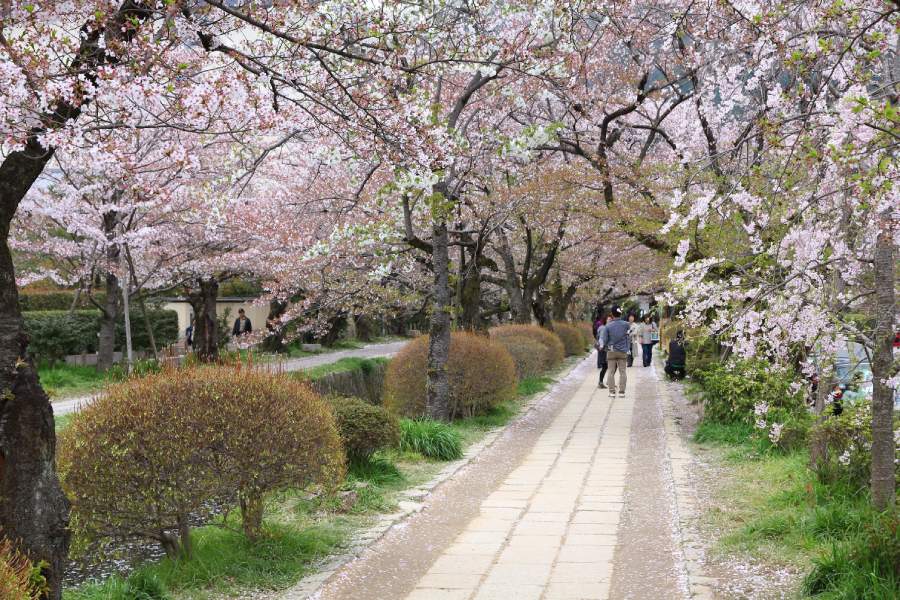
The Philosopher’s Walk is a tree-lined path that offers beautiful views of the Kyoto cityscape.
The walk can be found in the northern part of the city, near Daimonji Temple and Ginkaku-Ji.
It was built in 1894 by Jozan Hoshi, an academician from Tokyo Imperial University, to commemorate Shunso Hishi’s enlightenment under a cherry tree after long years of study at Toji temple.
Along this path are beautiful cherry trees and walking trails with benches where you can stop to take it all in.
One famous spot on the walk is Kiyomizu-dera (Pure Water Temple), which sits atop one hundred sixty-five stone steps leading down to the Kamo River below.
14) Explore the Nanzenji Temple
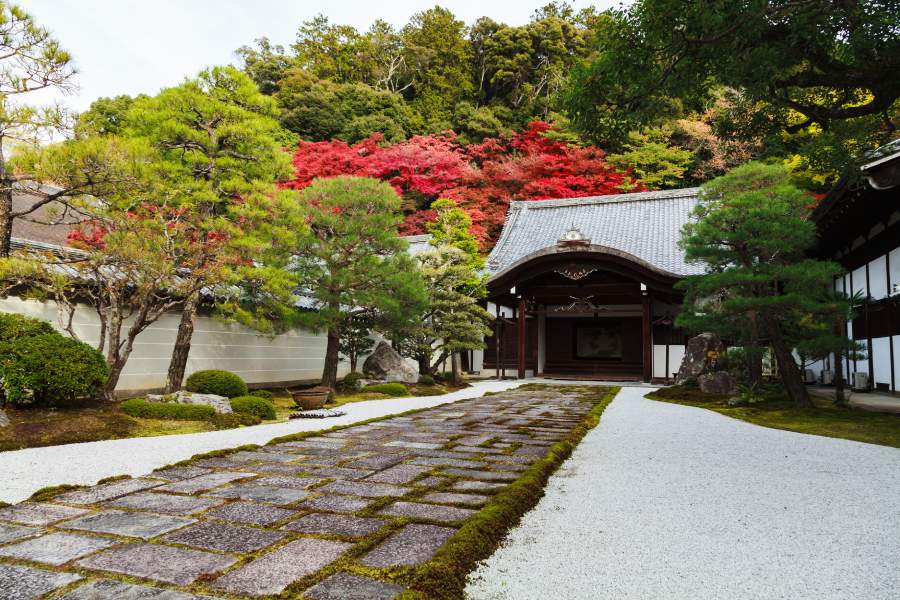
Nanzen-Ji is a Zen Buddhist temple in Kyoto, Japan. The name means “Southwest Temple” and refers to its location south of the city center.
Nanzen-Ji was established in 1291 by Shogun Tokugawa Ieyasu for his entourage and their families.
It is home to the world’s oldest ginkgo tree (planted around 1750), attracting many visitors annually during autumn leaves; it has been designated a National Special Historic Site and Place of Scenic Beauty.
Nanzen-ji’s garden is one of Japan’s three most famous gardens, along with the Kairakuen Garden in Mito and Kenrokuen Garden in Kanazawa.
The Nanzen-Ji temple complex is made up of a few different temples, including the main temple hall (Hojo), a gate (Sanmon), a lecture hall (Kodo), and various sub-temples.
The most popular attraction in the complex is the central garden, viewed from the Hojo and Sanmon.
15) Have a picnic of onigiri and tea under cherry blossoms.
Tea is an integral part of Japanese culture, entering the traditional tea ceremony, where etiquette ensures it’s prepared correctly.
Seasonal sakura-themed onigiri is a popular snack during hanami periods for its bright pink color resembling the blossoms.
16) Visit the Kinkakuji temple at night

Kinkakuji Temple is a Zen Buddhist temple in Kyoto, Japan.
The temple has a pavilion (Kinkaku) and gardens (Rikyu). Kinkaku-ji’s gold leaf shines beautifully at night when lit up with lanterns.
With its stunning architecture and unique beauty, it is no wonder that Kinkaku-Ji has been called one of the most beautiful places in Japan.
It is also worth mentioning that the grounds are considered some of the finest surviving examples of traditional Japanese landscaping techniques.
Visitors to this UNESCO World Heritage Site will not be disappointed by what they find here!
17) Take a class at a sake brewery

Sake is the national drink of Japan. It’s made from fermented rice, water, and yeast, then aged in wooden barrels for a year or more to develop its distinctive flavor.
It comes in many styles-sweet, dry, fruity, or savory-but it all starts with white sake, which is clear and light.
The best way to learn about sake is by taking a class at one of Tokyo’s many breweries, where you’ll get hands-on experience making your batch.
You can also go beyond just drinking it by cooking with it too!
18) Visit one of Kyoto’s many museums
One of the best ways to experience Kyoto is through its museums.
Kyoto has several museums that showcase traditional crafts, such as the Kyoto Museum of Traditional Crafts and the Hyokeikan (Kyoto National Museum).
These museums offer an immersive experience of world-renowned Japanese artistry and culture. The Kyoto National Museum features over 470,000 artifacts from Asia and Europe.
It also houses a collection of rare paintings by Claude Monet and Vincent van Gogh.
The museum’s garden offers stunning views of Mount Daimonji in autumn and cherry blossoms in springtime.
In contrast, the Kyoto Museum for Traditional Crafts focuses on preserving local techniques like lacquerware or pottery-making traditions passed down through the ages.
Many displayed items are for sale, making these museums an excellent opportunity to take quality souvenirs from Kyoto.
19) Watch a Kyogen play at the Shigaku-za or Kichiza.
Kyogen is a traditional form of comic theater performed in Kyoto.
Although the shows are often performed entirely in Japanese, Kyogen usually has an abridged version that can be understood by non-Japanese speakers, making it great for foreign tourists to attend without any knowledge of the Japanese language.
Each show lasts 45-60 minutes and is performed with an orchestra.
Making reservations in advance is advised, as most theaters only have 30 seats.
Some of the best Kyogen plays are often held at Kichiza Theater, where Bunraku (a form of traditional puppet theater) was born.
The Shigaku-za has been around since the late 19th century and is one of Kyoto’s most prestigious Kyogen theaters.
20) Take a dip in one of the many onsens in Kyoto.
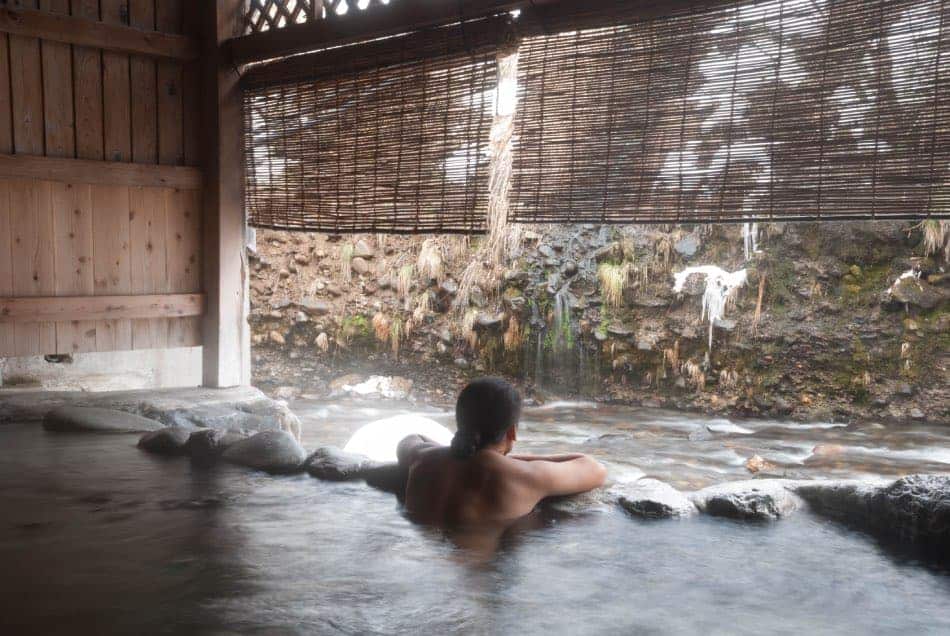
Kyoto is famous for its onsens, or hot springs. You can visit one of these public baths anytime during the day.
They are a place to relax and enjoy the rituals of washing yourself before entering and an excellent way to meet people worldwide. You’ll see everything from locals who live in Kyoto year-round to foreign tourists staying for just a few days.
If you’re looking for more than just relaxation, some onsens offer body treatments that will leave your skin soft and soothed after scrubbing with natural ingredients like ginger or green tea leaves.
And if you want to take home some souvenirs from this unique experience, buy something directly from one of the bathhouses, such as a traditional Japanese robe or a bag of sand from the beach on Mount Kurama.

